Physical Address
304 North Cardinal St.
Dorchester Center, MA 02124
Physical Address
304 North Cardinal St.
Dorchester Center, MA 02124
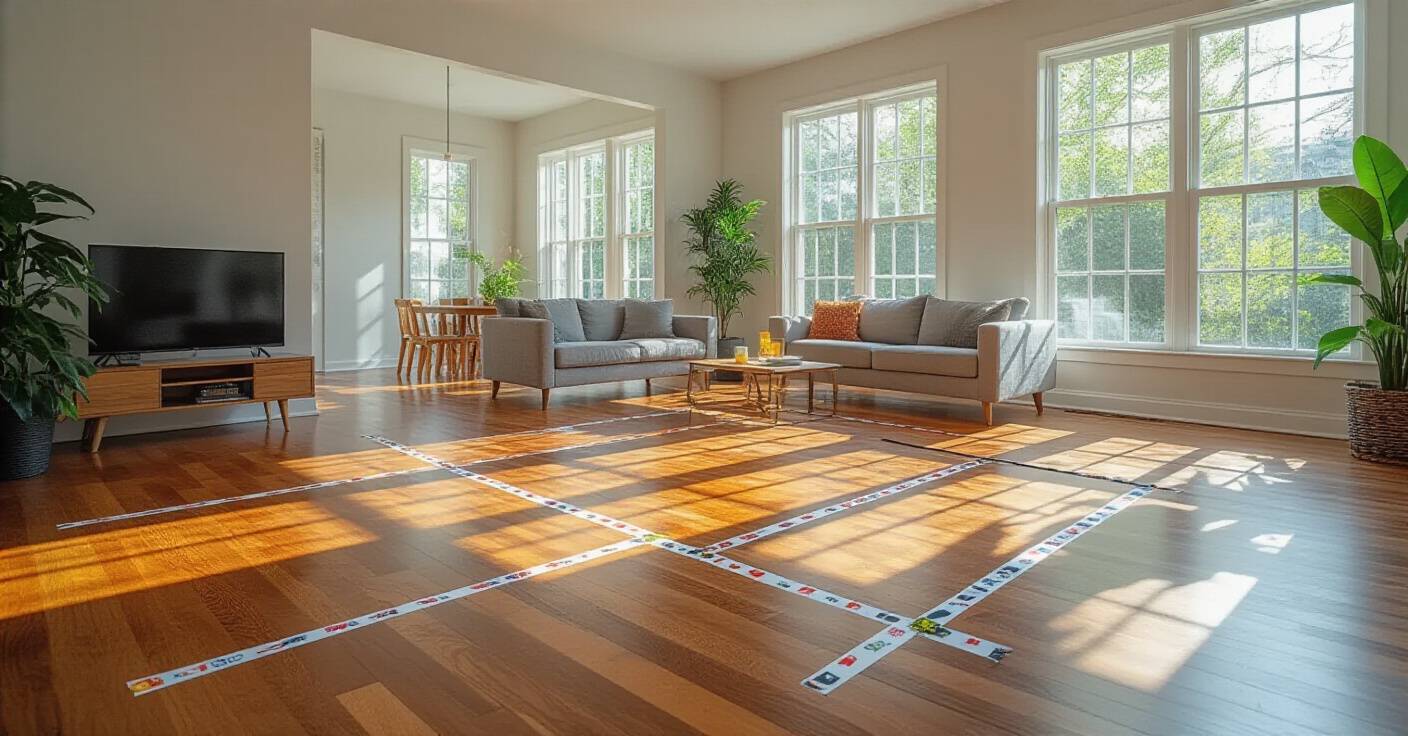
Build a high-energy home! Get 20 expert tips on living room furniture for a space that boosts wellness, comfort, and style. Transform your home, transform your life.
Can we talk about why everyone gets their living room wrong? People treat it like a museum. They buy a matching set of furniture, line it up against the walls, and then wonder why the room has the energy of a dentist’s waiting room. They wonder why they never actually want to hang out in there, why they always end up on the floor or migrating to the kitchen.
Here’s the secret: your living room isn’t just for looking at. It’s your personal recovery zone. It’s the place you recharge after a tough day, connect with people you love, and prep your mind for the next challenge. The furniture in it is the equipment. And just like in a gym, if your equipment is uncomfortable, poorly placed, or just plain wrong for your goals, you’re not going to get the results you want. I learned this the hard way years ago, trying to make a gorgeous but brutally uncomfortable designer sofa work in my tiny apartment. It looked amazing in photos, but it was actively draining my energy. It had to go. I’m going to give you the shortcuts so you can build a space that energizes you, not exhausts you.
Before you even think about shopping, you’ve got to do the prep work. This is the warm-up. Skipping this part is like trying to hit a personal best on a deadlift completely cold. It’s a guaranteed way to make costly mistakes and end up with a room that feels ‘off.’ Think of this as creating the game plan for your space, setting you up for a win.
I know, I know. Measuring sounds boring. But listen, this is the most important step. An inch or two might not seem like a big deal, but in a room, it’s the difference between a space that flows and one that feels like a crowded bus. A cluttered path creates mental clutter, and that low-grade stress saps your energy every single time you have to shimmy past the coffee table.
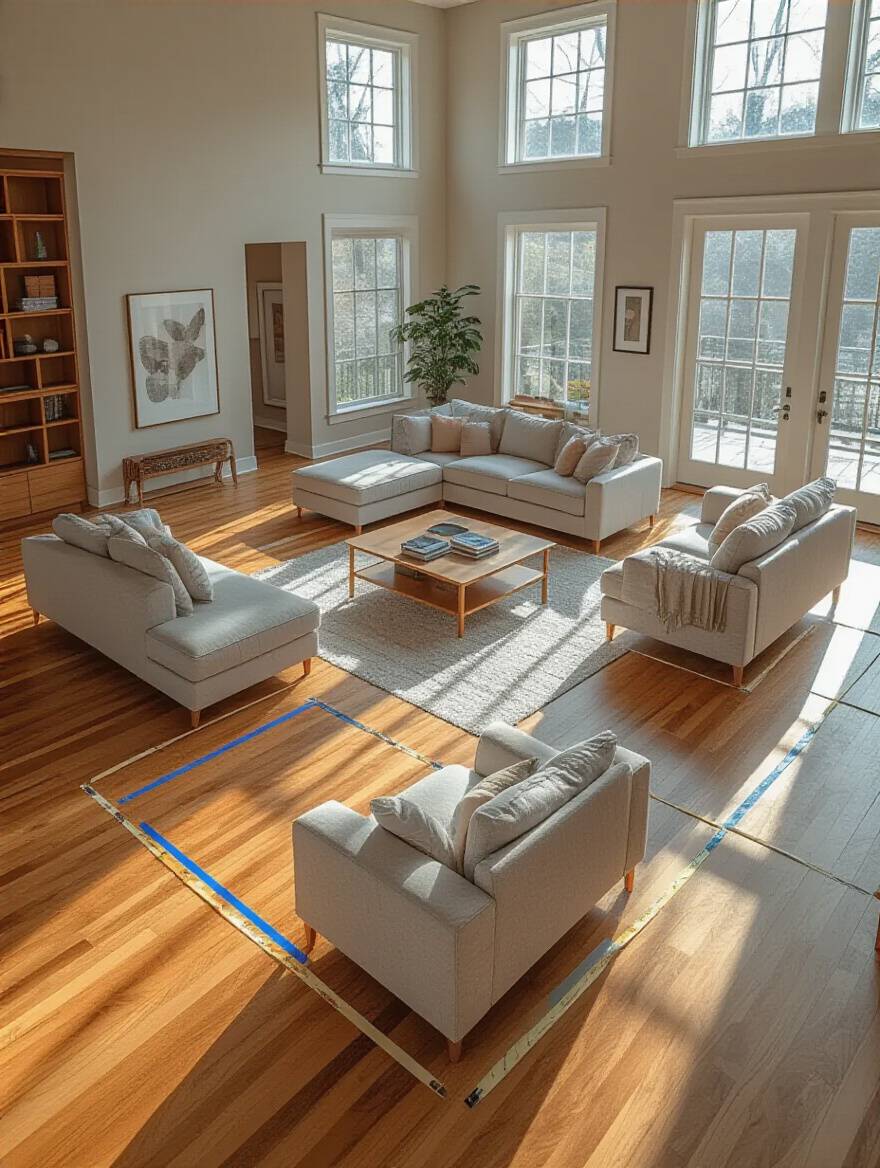
Get a tape measure and map it all out: walls, doors, windows, outlets. Then, use painter’s tape on the floor to mark out the footprint of the sofa or chairs you’re considering. This is my go-to trick for clients. It makes the scale real. You’ll instantly see if a walkway is too tight or if a piece completely overwhelms the room. This five-minute drill will save you the massive headache and expense of returning a sofa that doesn’t fit.
This foundational work isn’t just about avoiding problems; it’s about actively designing for a sense of calm and order, which is the bedrock of any good recovery space.
What is the actual goal of this room? Seriously. “Living” is not a specific enough answer. Is this your personal “Recovery Zone” for quiet reading and stretching? Is it a “Family Connection Hub” for games and movie nights? Or is it your primary “Social Arena” for entertaining guests? You can’t train for a marathon and a powerlifting meet at the same time, and you can’t optimize a room for every possible activity at once.
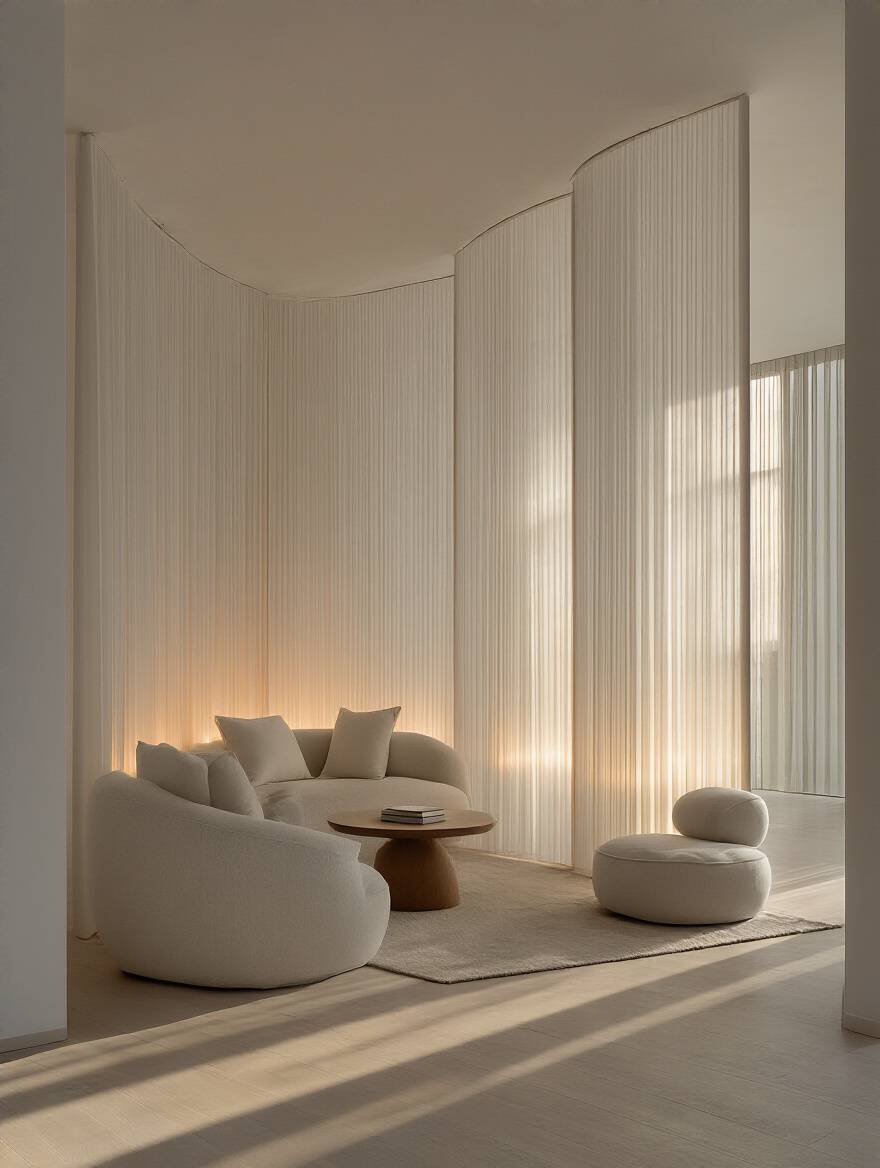
Once you name its primary purpose, every furniture choice becomes instantly clearer. A Recovery Zone needs a deep, Comfortable Sofa you can sink into, not a collection of stiff, upright chairs. A Social Arena might need a modular sectional and multiple small tables for drinks. The BS everyone tells you is that you can have it all. The truth is, you need to prioritize. Defining the mission for your space ensures every piece you bring in is working towards that goal, creating a room you’ll actually want to use.
With that mission in mind, you can start mapping out the different ways to achieve it on paper.
You wouldn’t walk into a gym without a workout plan, right? So don’t go furniture shopping without a layout plan. This is where you test your ideas without spending a dime. Grab a piece of paper or use a simple online tool and start moving shapes around. How does the energy change when the sofa faces the window versus the fireplace? Where do the accent chairs go to encourage conversation instead of making everyone stare at the TV?
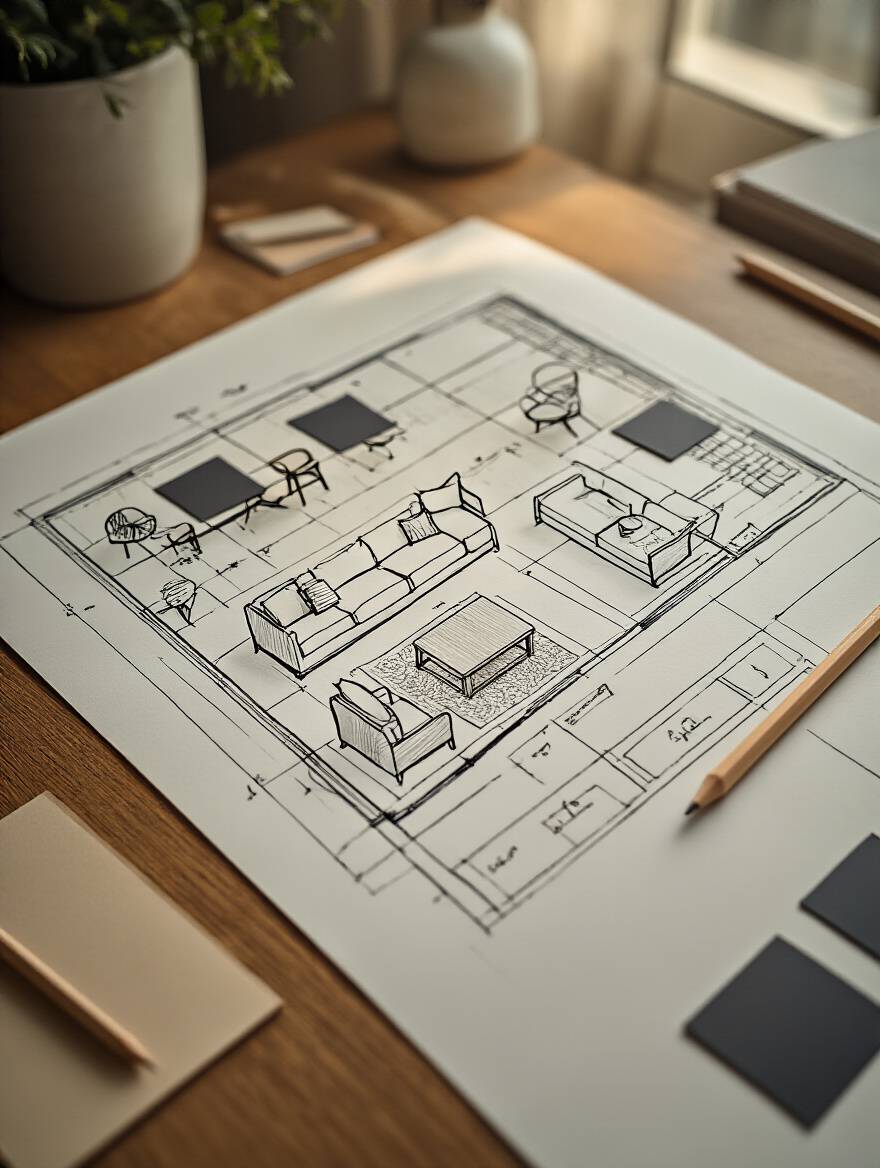
This step is your chance to fail fast and cheap. I had a client who was convinced she needed a massive L-shaped sectional. After we sketched it out, she saw it would create a huge barrier, essentially cutting the room in half and killing the flow. We switched to a sofa and two chairs, and the space felt twice as big and infinitely more welcoming. Sketching lets you see the future and fix it before it happens. It’s the difference between an intentional design and a room full of accidental, expensive purchases.
The best part is, once you have a layout you love, you can create a style that makes it feel amazing.
Aesthetic isn’t just about looking good in an Instagram photo. A cohesive style creates a sense of calm and predictability. When your brain walks into a room where everything feels like it belongs together, it can relax. A room with a chaotic mix of clashing styles, on the other hand, is visually noisy. It’s a low-key stressor that keeps your mind from fully settling down. You want your recovery zone to be serene, not screaming for your attention.
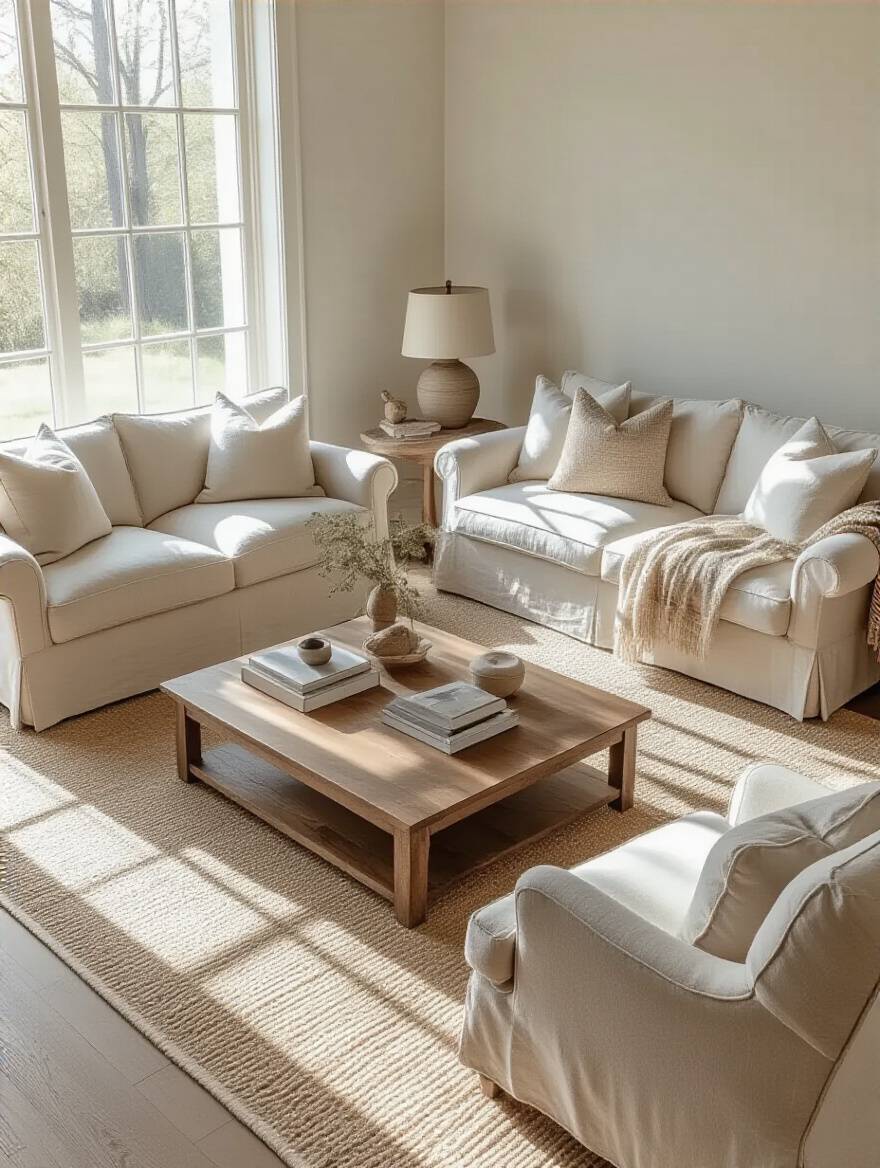
The shortcut here is to create a mood board. Use Pinterest or just rip pages from a magazine. Collect 10-15 images that capture the feeling you want—the colors, the textures, the overall vibe. You’ll start to see a pattern emerge. Maybe it’s warm woods and soft fabrics, or maybe it’s clean lines and metal accents. That pattern is your style. Use it as a filter for every single purchase. If a piece doesn’t fit the mood board, it doesn’t get in the room. Period.
Now that we have the vision, let’s talk about the resources to make it happen.
Okay, you’ve got your mission, your floor plan, and your vibe. The final step of the foundation is the one everyone dreads, but it’s where the pros separate themselves from the amateurs: the budget. Getting this right is about strategic investment in your well-being, not just spending money.
Think of your budget as your energy allocation for this project. The biggest mistake people make is buying a cheap sofa so they have money left over for a bunch of decorative junk. This is like eating candy bars for energy; you get a quick high followed by a crash. A flimsy sofa that gives you back pain or falls apart in three years is not a bargain. It’s a recurring expense and a physical drain.
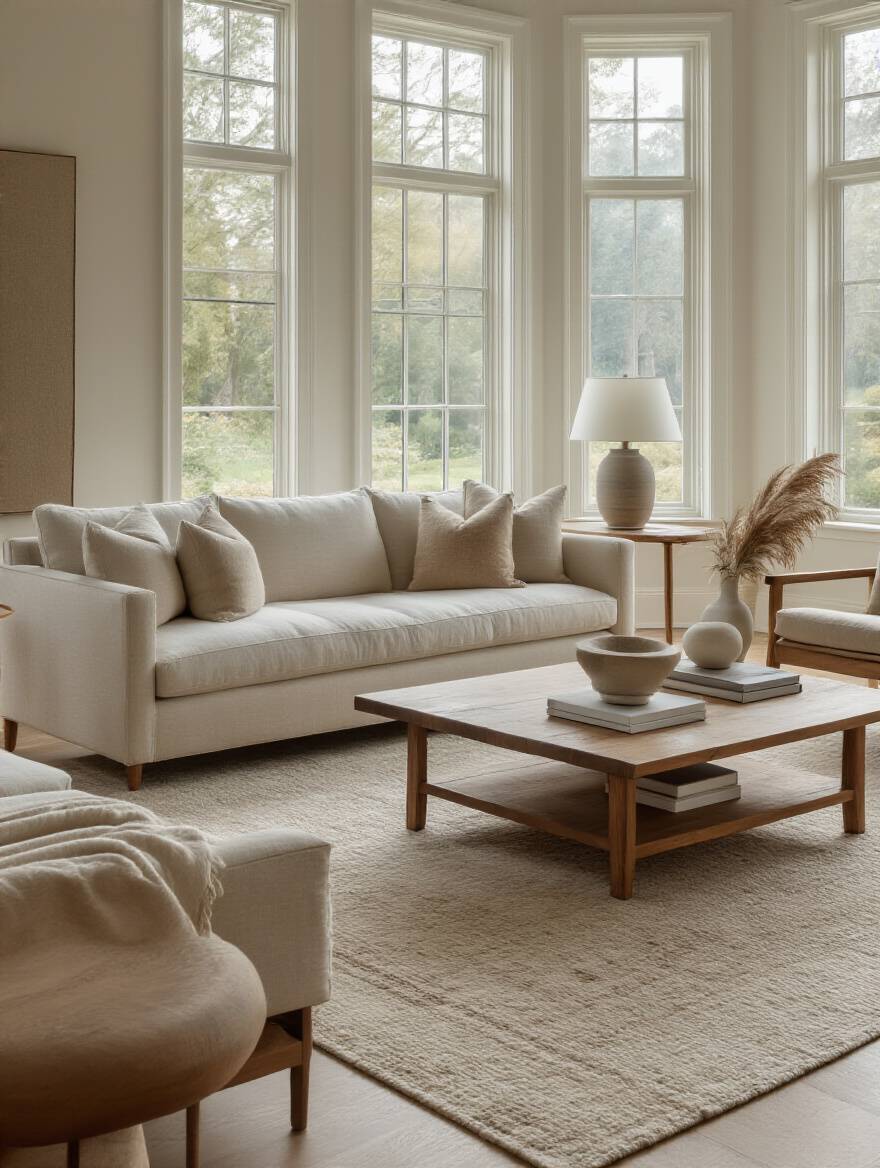
Here’s my rule: Allocate 70% of your budget to your foundational “lifts”—the high-contact, high-use pieces like your sofa and main chairs. These are investments in your daily comfort and physical well-being. The other 30% is for “accessory work”—the coffee table, lighting, rugs, and pillows. These are easier and cheaper to swap out later when you want a fresh look. Investing in a high-quality, durable sofa is the single best thing you can do for the longevity and comfort of your living room. It’s the core of your entire workout.
Now for the main event—picking the actual equipment for your new space.
This is where your plan turns into reality. We’re choosing the core pieces that will define the function and feel of your room. Each choice should be intentional, supporting your primary goal for the space, whether that’s peak relaxation or energized socializing. Let’s get it right.
The sofa is your recovery throne. It’s where you put your feet up, decompress, and connect with your family. Choosing the wrong one is a disaster. The most common mistake? Buying one that’s too big. A massive, overstuffed sofa in an average room sucks all the air out of the space and makes it feel cramped and sluggish. Your sofa should take up about two-thirds of the main wall it’s on, leaving “breathing room” on either side.
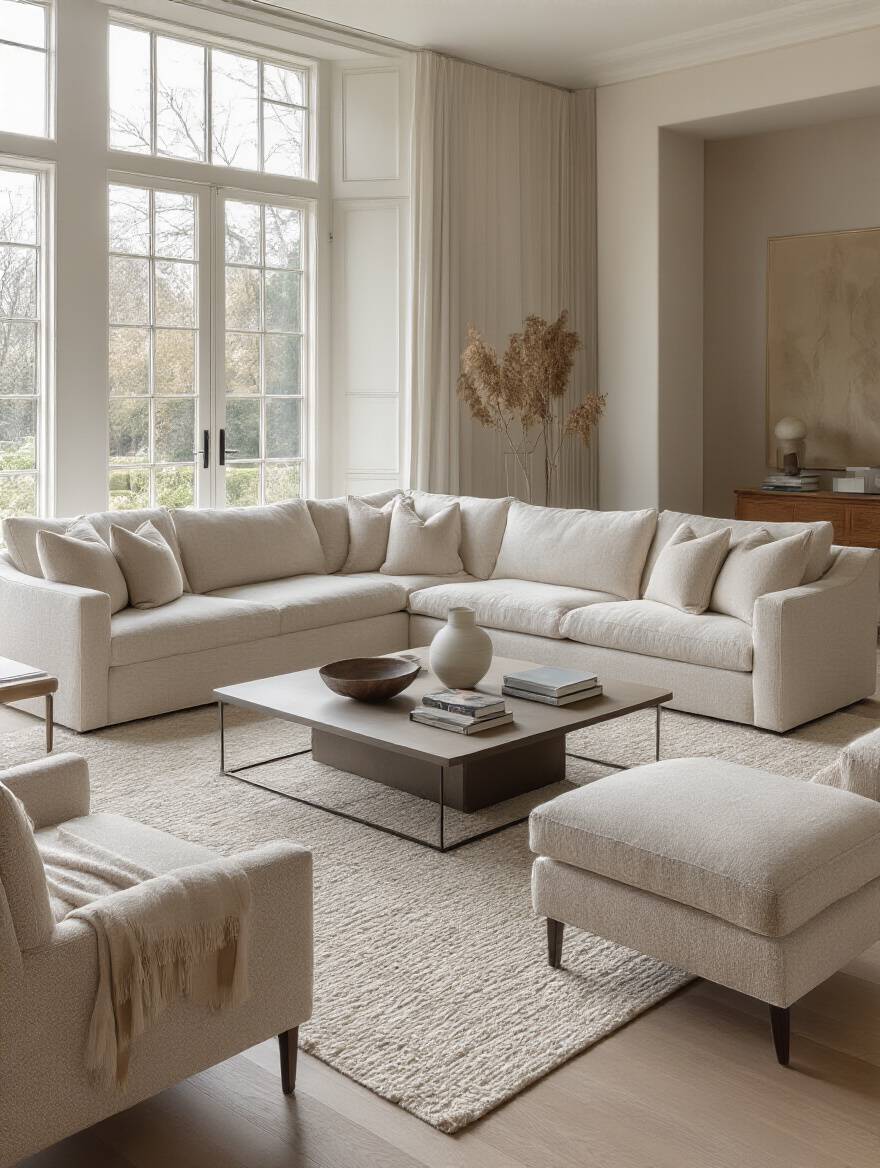
Pay attention to ergonomics, too. A super-deep sofa might seem great for lounging, but if you like to sit up and talk with guests, you’ll feel like a kid with your feet dangling off the edge. Before you buy, go to a store and actually sit on different styles. How does your back feel? Can you get up easily? A great sofa supports your posture even when you’re relaxing, contributing to your physical well-being instead of detracting from it.
But the sofa isn’t the only player on the team; its supporting members are just as crucial.
Accent chairs are your dynamic players. While the sofa is for deep relaxation, accent chairs are for “active” sitting—leaning into a good conversation, reading a book, or having a focused moment. They break up the monotony of a single large sofa and create more versatile seating arrangements that can adapt to different situations. A pair of chairs can create a cozy conversation nook away from the main seating area.
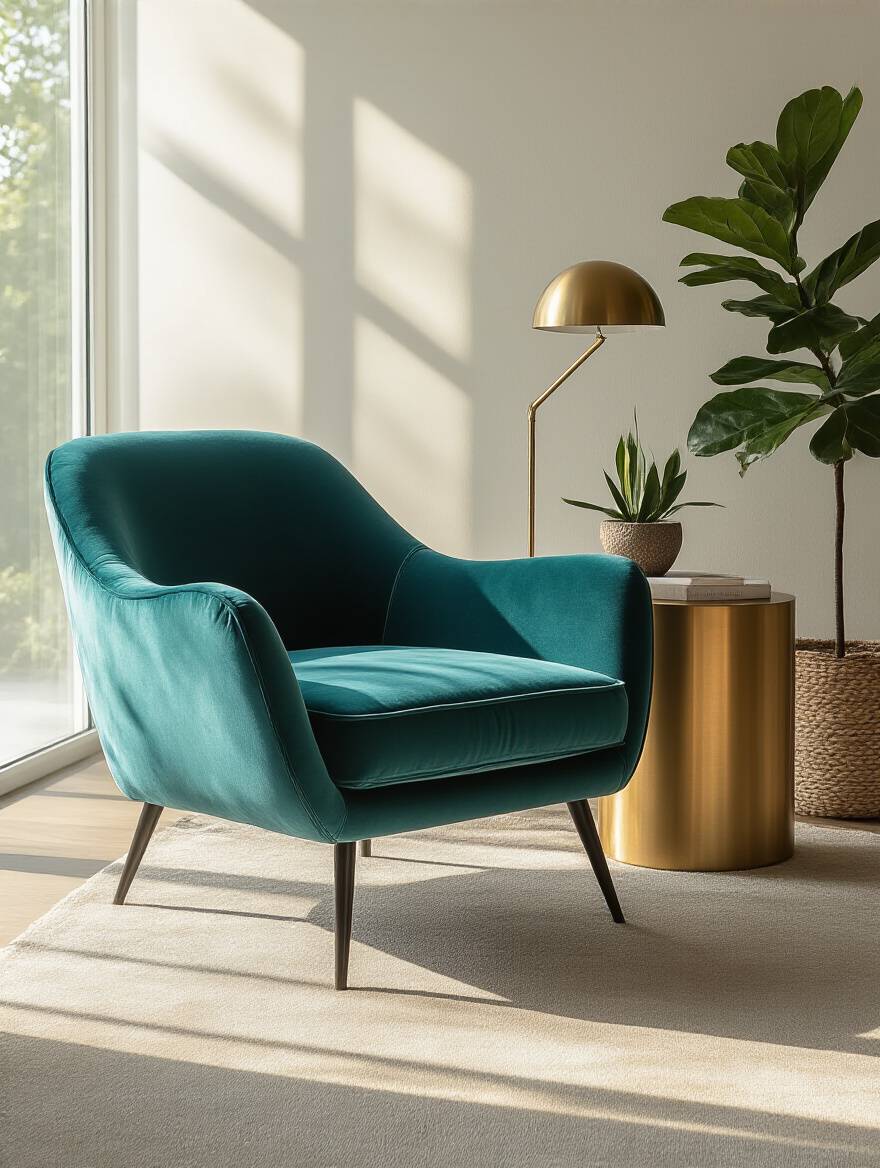
This is your opportunity to inject energy and personality into the room. While your sofa might be a neutral foundation piece, your accent chairs can be where you play with color, pattern, or a bold shape. Think of them as the exciting accessory lifts in your workout routine that build strength in surprising ways. Don’t be afraid to choose chairs that contrast with your sofa in style or material. A sleek Leather Armchair can be a fantastic counterpart to a soft fabric sofa.
They work best when supported by functional, well-placed surfaces.
For anyone not living in a palace, Multi-functional Furniture is a non-negotiable. These are the high-intensity interval training (HIIT) of the design world: they deliver maximum results in minimal space. An ottoman that opens up for storage, a coffee table with a top that lifts up into a desk, or a console table that can double as a serving buffet during a party—these are the workhorses that make a room more efficient.
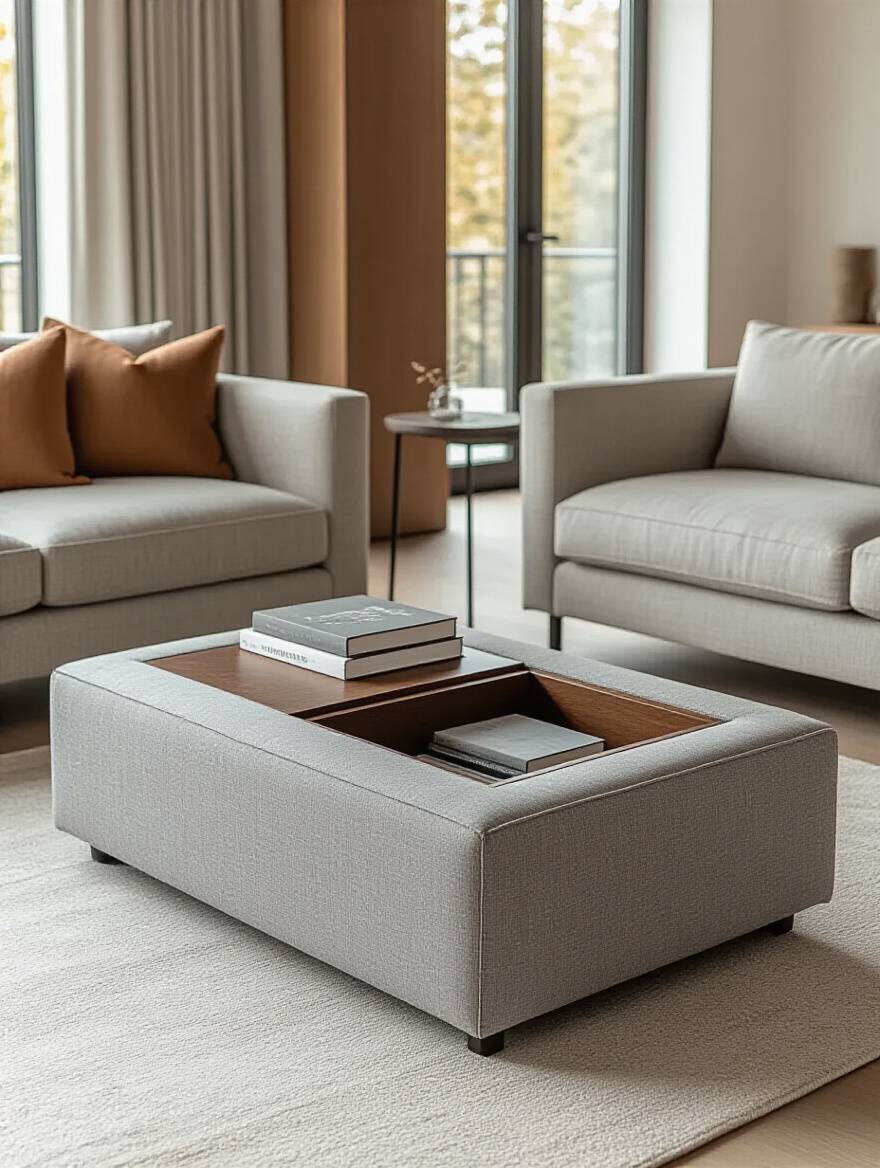
The key is to find pieces that do their multiple jobs well without sacrificing style or quality. A flimsy, ugly storage ottoman isn’t a win. I once worked with a client in a studio apartment who replaced his bulky coffee table with a sleek bench. It served as a surface for drinks, extra seating for guests, and a spot to do his morning stretches—all while taking up less visual space. Every piece in your room should earn its spot. If it only does one thing, it better do it perfectly.
The best multi-functional pieces often come in the form of cleverly designed tables.
Your tables are your support system. A living room without them is deeply dysfunctional. Every seat needs a convenient spot to place a drink, a book, or a phone. Nothing kills a relaxing vibe faster than having to get up constantly or awkwardly hold your glass. A good rule of thumb is to have a surface within arm’s reach of every primary seat.
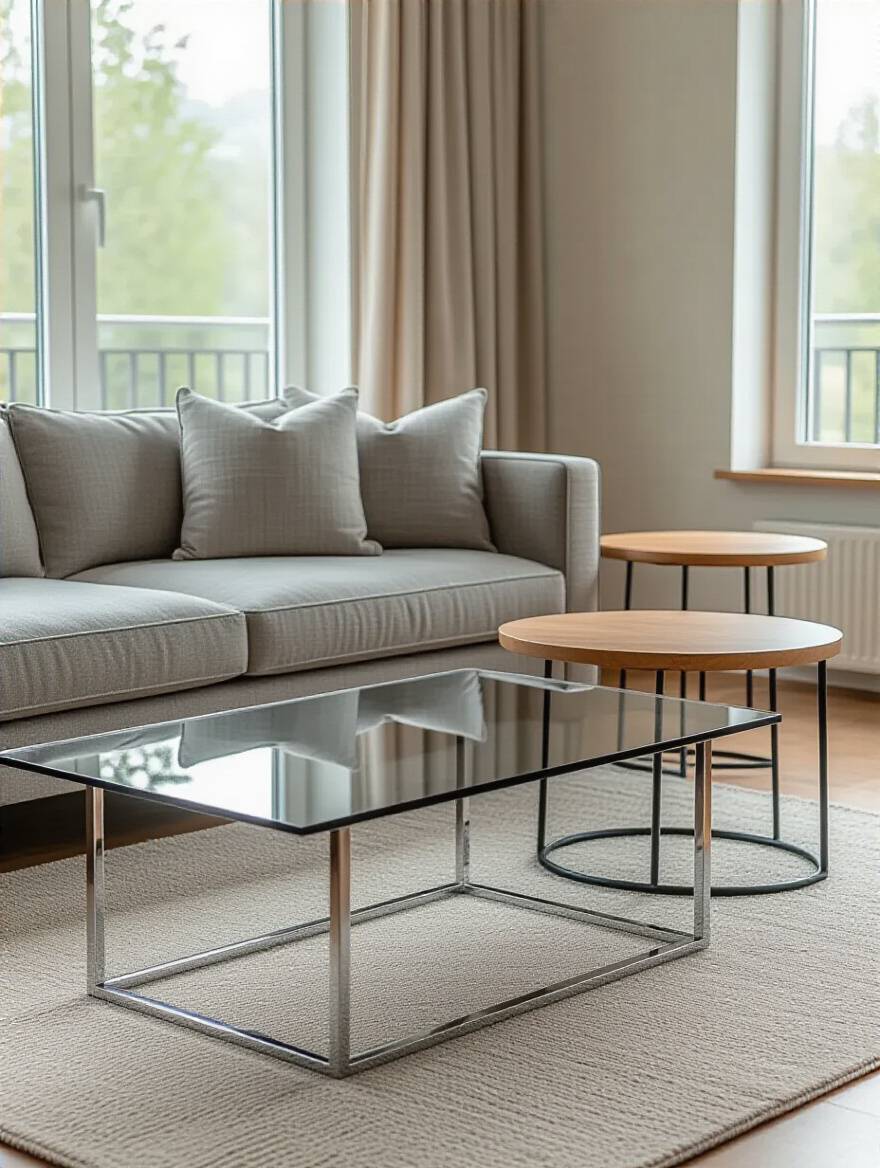
The BS advice here is to buy a matching “set” of tables. Don’t do it. A room with a matched coffee table and two identical end tables looks dated and flat. Instead, create a more curated, dynamic look by coordinating, not matching. Pick tables that share a common element—maybe they’re all made of wood but in different tones, or they share a similar metal finish like black or brass. Varying the shapes and heights adds so much more visual interest. An oval coffee table with a square end table and a small round drink stand feels collected and intentional, not like you bought it all off the showroom floor in ten minutes.
This careful selection of key pieces creates the “body” of your room, ready to be grounded and defined.
We’ve chosen the major players. Now it’s time to add the element that pulls everything together and defines the space. Without this piece, your furniture can feel like it’s just floating aimlessly. A well-chosen rug acts as the foundation for your entire layout, creating a zone of purpose and comfort.
A rug is not a doormat. It is the wrestling mat, the yoga studio, the conversation pit. It defines your “zone of activity” and physically anchors your furniture, pulling it together into a cohesive group. The biggest, most unforgivable mistake I see people make is buying a rug that is too small. A tiny “postage stamp” rug that just sits under the coffee table makes the whole room look smaller and disjointed. It’s a total amateur move.
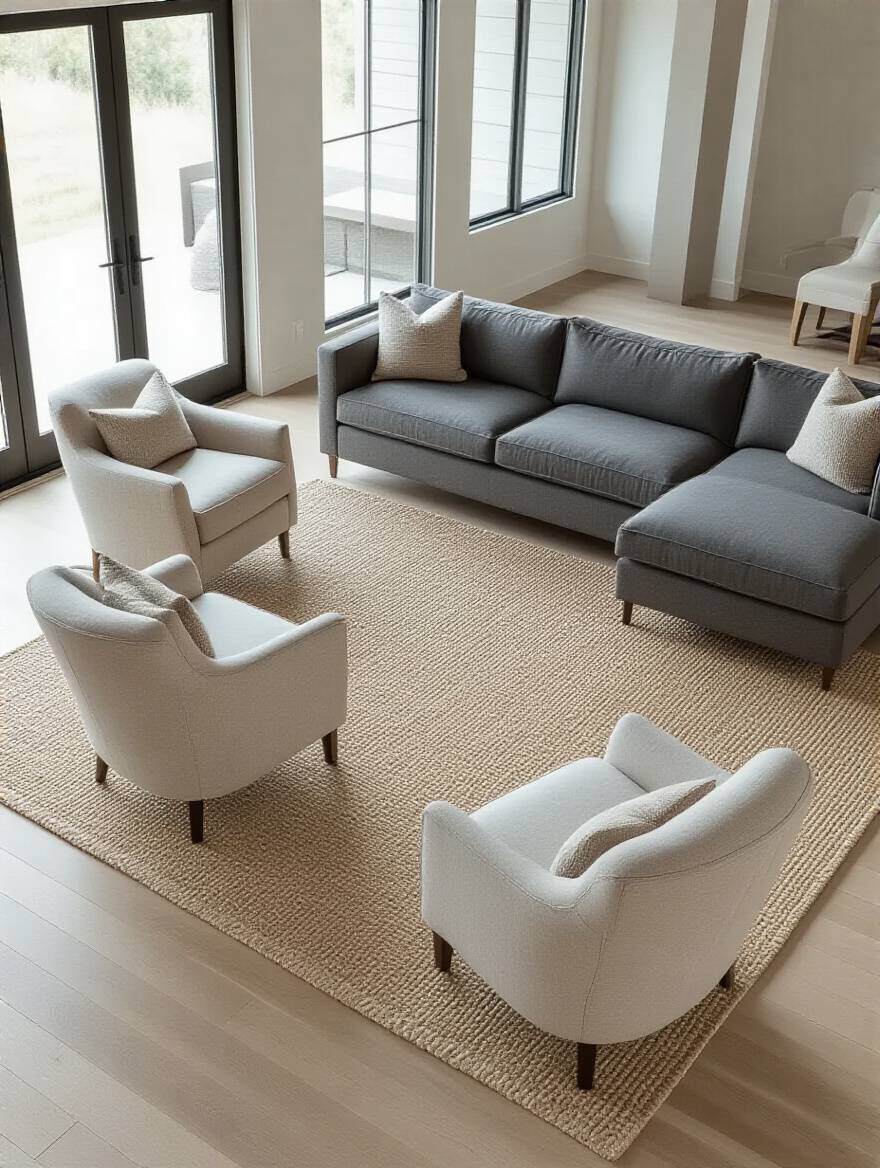
Here’s the only rule you need to know: at least the front two legs of your sofa and every chair in the main seating group must be on the rug. All the legs is even better. This visually connects everything. In an open-concept space, a large rug is the single best way to say, “This is the living room area,” without building walls. It creates a powerful, intentional island of comfort and purpose. Invest in the largest rug your room can comfortably handle. It will make your space feel more expansive and luxurious, I promise.
With our zones defined, it’s time to infuse the space with character and make it uniquely yours.
This is the fun part. The foundation is solid, the main equipment is in place, and now we add the details that take the room from functional to fantastic. This is where we control the energy, mood, and personality of the space.
Lighting is everything. You cannot have a high-energy, functional space with one harsh overhead light. That kind of lighting is like an alarm clock going off at 10 PM—it’s stressful, unflattering, and completely wrong for the task at hand. Your goal should be to layer your lighting to support your body’s natural circadian rhythm.
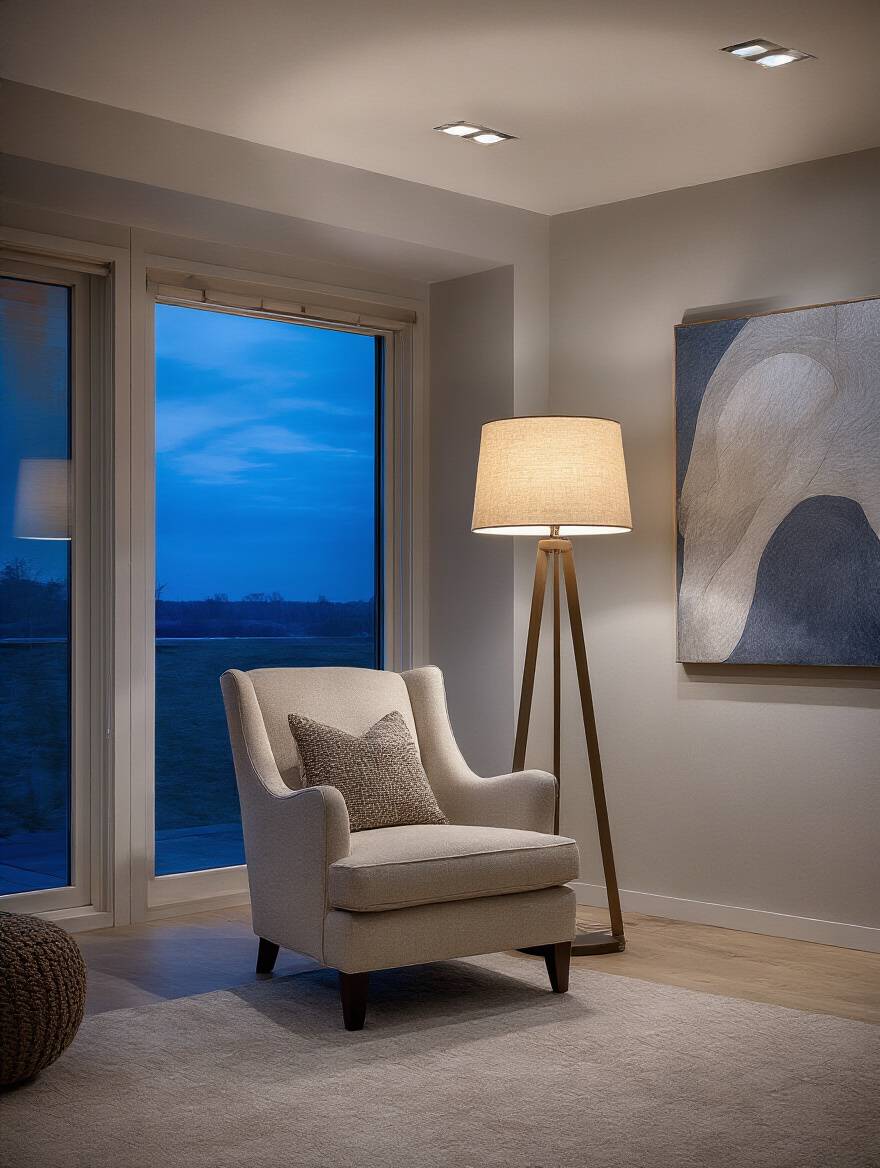
Every room needs at least three types of light: ambient (the overall glow, maybe from a ceiling fixture or recessed lights on a dimmer), task (focused light for activities like reading, provided by a floor or table lamp), and accent (a soft glow to highlight art or a plant). The secret weapon is putting everything on a dimmer. This allows you to have bright, energizing light during the day and a warm, calming glow in the evening to signal to your brain that it’s time to wind down. Proper lighting is one of the most powerful wellness tools you can have in your home.
It sets the stage for the personal touches that truly make a space sing.
Bare walls are a sign of a room that’s not quite finished. Art and decor are what give your space its soul. This isn’t about buying generic “Live, Laugh, Love” signs. This is about surrounding yourself with things that energize, inspire, or calm you. Think of your walls as your personal vision board. What do you want to be reminded of every day?
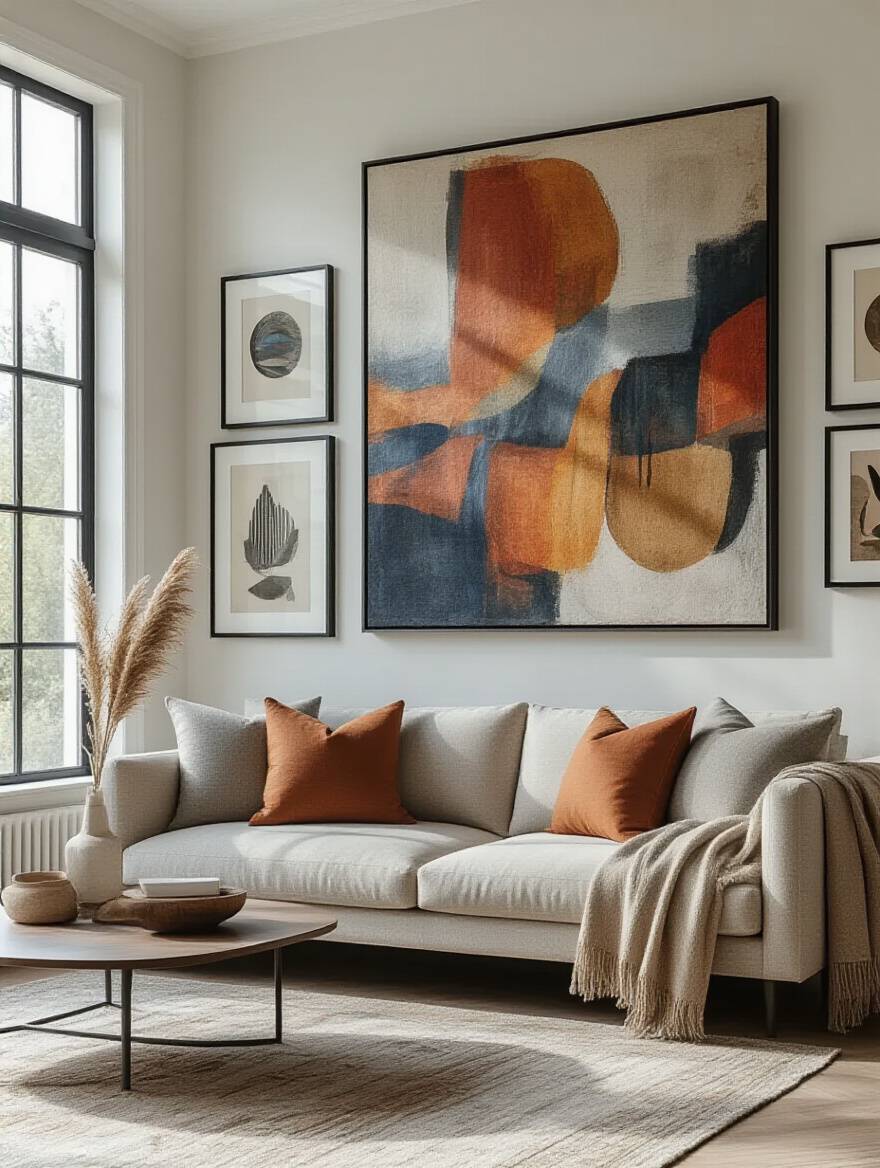
“Art is the ‘why’ on your wall. It should be a source of motivation or a window into tranquility.”
Pick at least one large, statement piece to serve as a focal point. This anchors the room and gives the eye a place to rest. Then, you can build a smaller gallery wall with more personal photos or smaller prints. Pro tip: hang your art lower than you think. The center of the piece should be at eye level (about 57-60 inches from the floor), not floating up near the ceiling. This makes it feel connected to the furniture and the people in the room.
Art brings the visual punch, but textiles bring the essential element of touch.
A living room without pillows and throws is like a workout without a cool-down. It’s harsh, incomplete, and uncomfortable. Textiles are your tools for layering in softness and comfort, signaling to your body that this is a place for rest and recovery. The sense of touch is incredibly powerful, and a soft blanket or a plush pillow can have a real physiological effect, helping to lower stress.
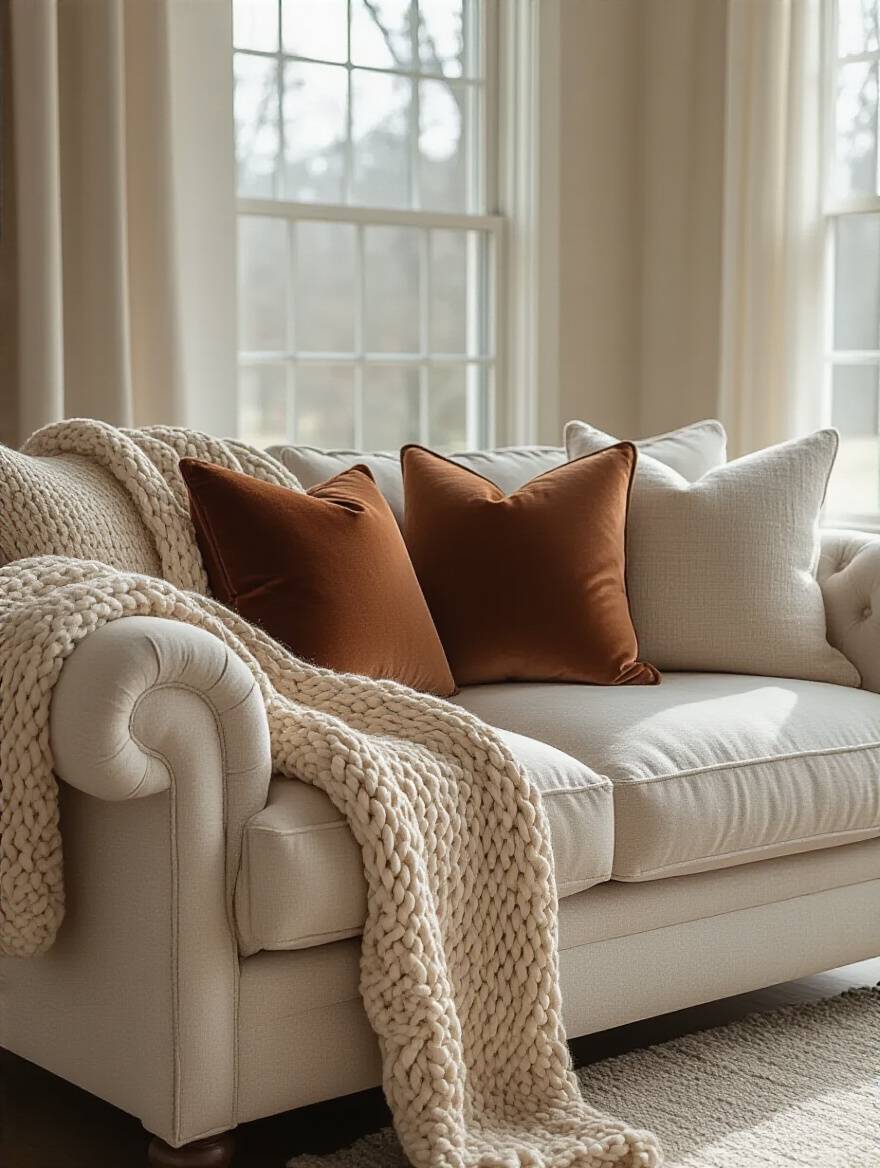
Forget the perfectly matched, karate-chopped pillows that look like you’re not allowed to touch them. Your pillows should be inviting. Mix different textures—a chunky knit, a smooth velvet, a relaxed linen—to create a rich, tactile experience. Aim for an odd number of pillows on a sofa, like three or five, for a more casual and balanced look. And a good throw blanket draped over a chair or the arm of a sofa is an open invitation to get cozy.
Next, we add the one element that literally brings your room to life.
Every single room, without exception, needs something living in it. Plants are the easiest and most effective way to boost the energy and health of your space. They are nature’s air purifiers, filtering out toxins and releasing oxygen. But more than that, studies have shown that just being around plants can reduce stress, improve your mood, and increase focus. It’s a concept called biophilia—our innate need to connect with nature.
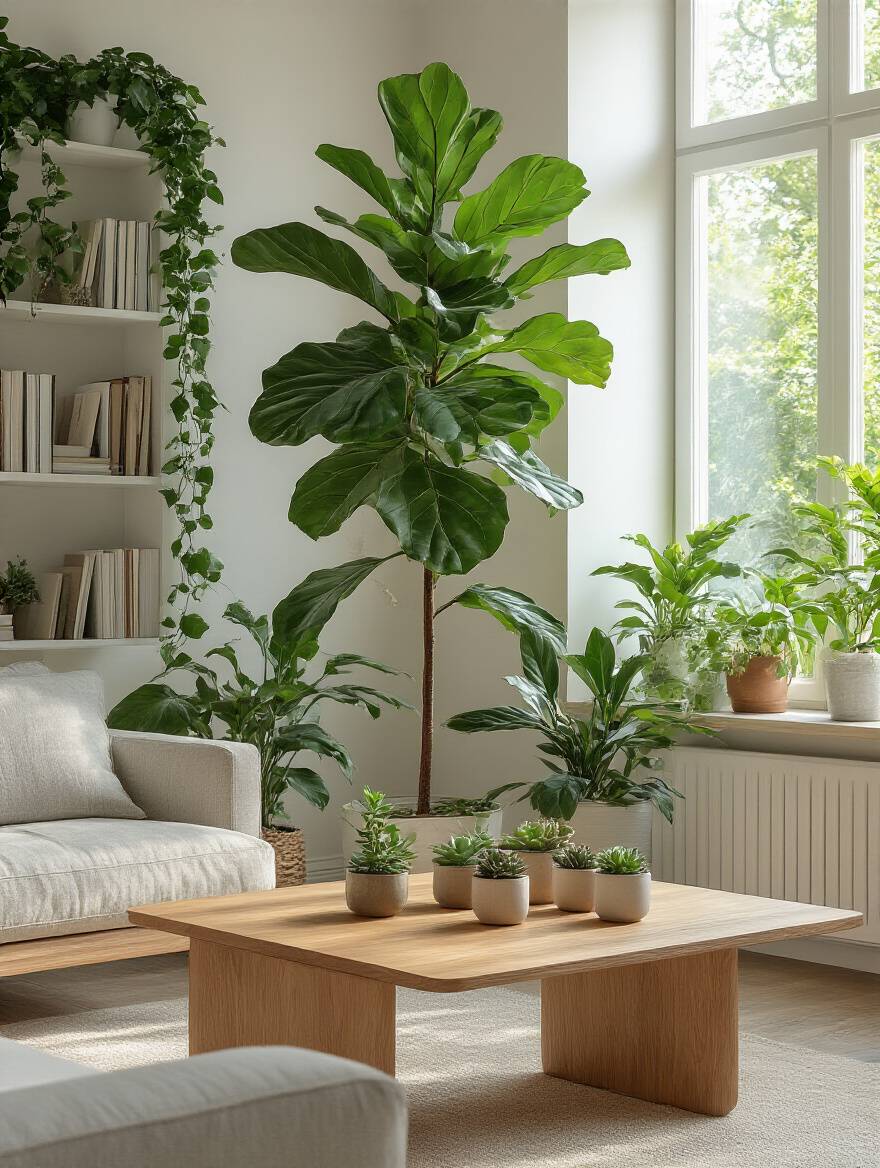
You don’t need a massive indoor jungle. Start with one or two easy-to-care-for plants like a Snake Plant or a ZZ Plant (they’re almost impossible to kill). Place a larger floor plant in a corner to add height and a smaller one on a bookshelf or coffee table. The green adds a vibrant, natural color that complements any style. A room without a plant is a room that’s missing a crucial spark of life.
Now let’s bring that same life and intentionality to the smaller surfaces in your room.
We’re in the home stretch. This is about refining the details on surfaces like shelves and tables. The goal here is curation, not clutter. A messy, overstuffed bookshelf creates visual noise and mental static. A well-styled surface, however, can be a source of calm and inspiration.
The key to styling any surface is to think like a curator. You are creating a small, intentional display, not just finding a place to put all your random stuff. The number one rule is to use items of varying heights to create a more dynamic and pleasing arrangement. Group objects in threes or fives, with a tall item (like a vase), a medium item (like a framed photo), and a low item (like a small bowl or a stack of books).
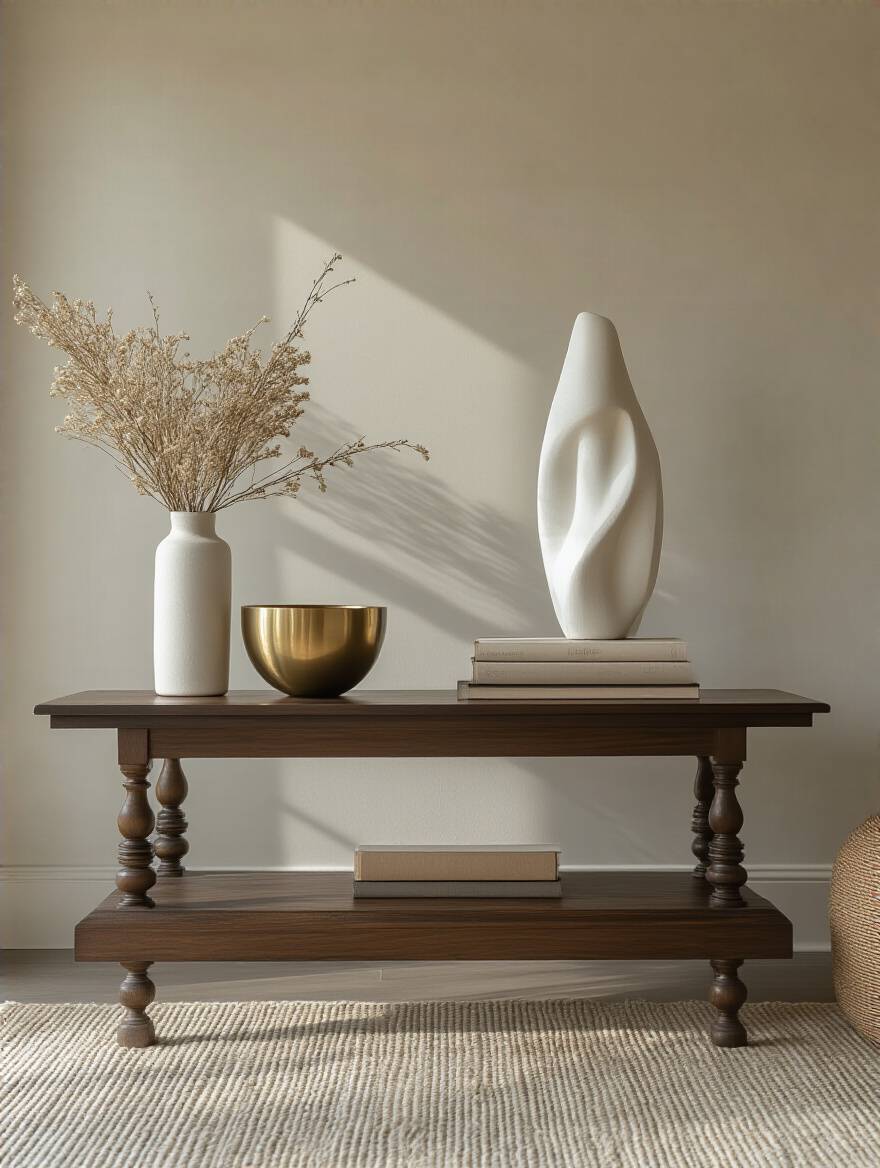
Leave some empty space! This is called “negative space,” and it’s what allows the objects you’ve chosen to stand out and be appreciated. A packed shelf feels chaotic, but a shelf with thoughtful groupings and a little breathing room feels calm and collected. This is also the perfect place to inject your personality. Display books you love, a beautiful object from your travels, or a photo that makes you smile. Turn these surfaces into tiny moments of joy and inspiration.
With the room looking amazing, our final job is to keep it that way for the long haul.
A great living room isn’t a one-time project; it’s an ongoing process. Just like maintaining your health, you need to put in a little consistent effort to keep your space looking and feeling its best. These next steps are about building longevity into your design.
You can’t expect your body to perform without proper maintenance, and the same goes for your furniture. Spills and dirt happen. Ignoring them allows them to set in, permanently damaging the fibers and shortening the life of your upholstery. Vacuum your sofa and chairs weekly with a brush attachment to pick up dust and crumbs. It’s a two-minute job that makes a huge difference.

Know your fabric’s cleaning code (it’s usually on a tag under the cushions). A “W” means you can use water-based cleaners, while an “S” means it needs a solvent-based cleaner. Using the wrong one can be a disaster. The moment a spill happens, blot it—never rub—with a clean white cloth to absorb as much as possible before treating it. This proactive care is what keeps a quality piece of furniture looking great for a decade instead of looking tired after just a couple of years.
And that proactive mindset extends to the layout itself.
Leaving your furniture in the exact same spot for years is like doing the same workout routine forever. Eventually, you get bored, and it becomes less effective. Shaking up your layout once or twice a year keeps the room feeling fresh and ensures it’s optimized for how you’re living right now.
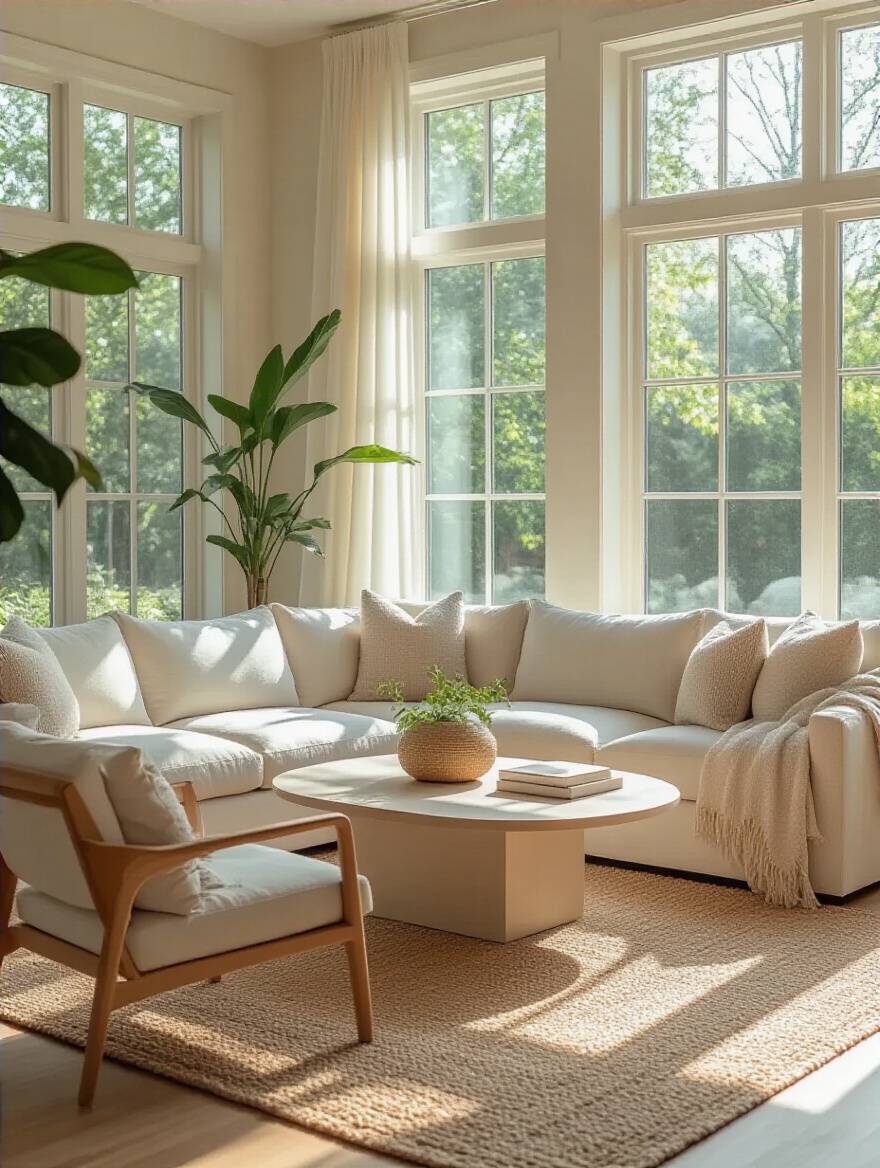
In the winter, you might pull your seating group closer together around a fireplace to create a cozier, more intimate vibe. In the summer, you might move things around to maximize the natural light from a window or improve the flow out to a patio. This also helps distribute wear and tear more evenly on your furniture and rugs. It’s a zero-cost way to completely transform the energy of your space and fall in love with it all over again.
This strategy of mixing things up applies to the finishes and materials in your room, too.
A room where the wood on the coffee table perfectly matches the wood on the media console and the end tables is boring. It lacks depth and personality. A truly sophisticated space feels collected over time, not bought as a set. Don’t be afraid to mix different wood tones, metals, and fabrics.
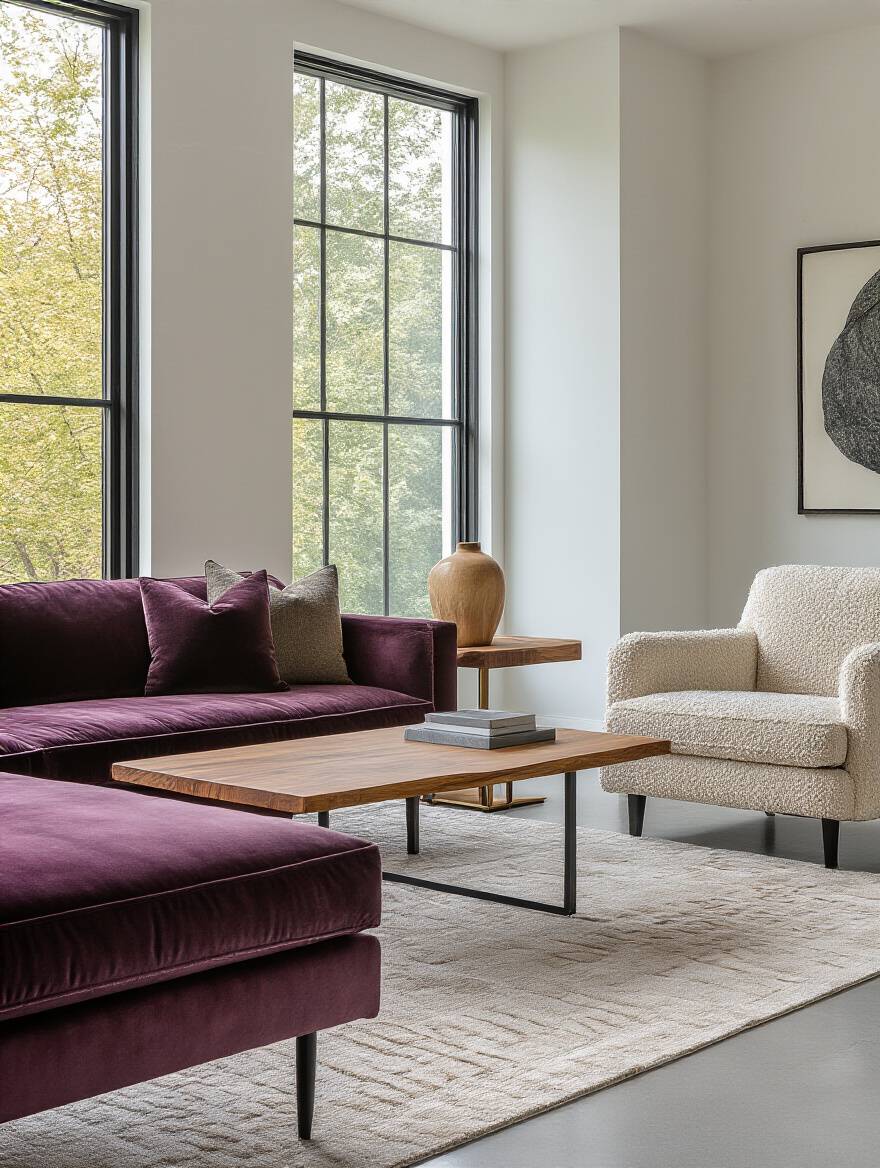
The trick to making it work is to have a unifying element. Maybe you mix different woods, but you stick to one metal finish (like black) throughout the space for consistency. Or you have a mix of brass and chrome, but your color palette is very tight and controlled. I love seeing a rustic wood coffee table paired with a sleek, modern sofa or a warm leather chair next to a cool metal floor lamp. This dynamic contrast creates visual energy and makes a room feel much more custom and interesting.
This long-term mindset also means dealing with problems as soon as they arise.
This is like treating a minor tweak or strain before it becomes a full-blown injury. A wobbly leg on a chair, a small scratch on a table, or a snag in the upholstery might seem like no big deal, but ignoring them is a mistake. That wobble will stress the other joints, leading to a break. That scratch can let moisture in, damaging the wood finish.
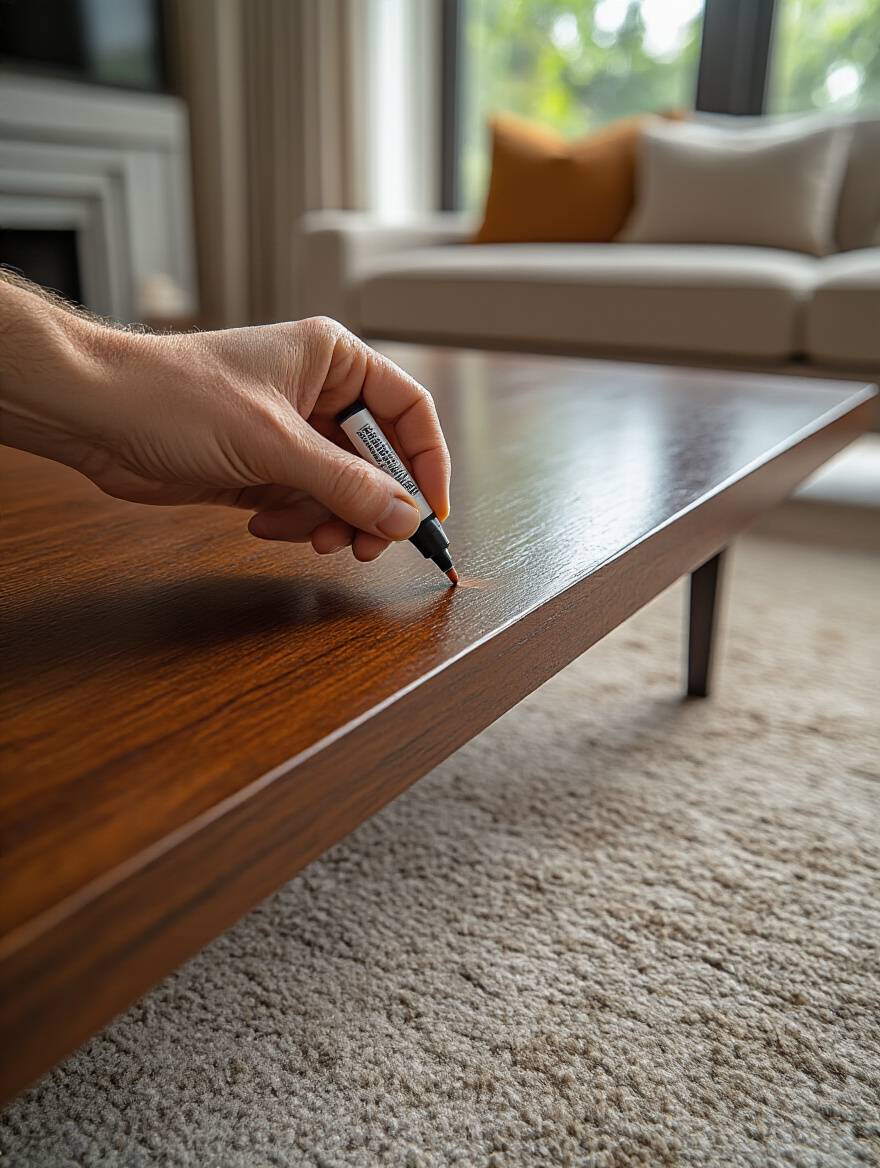
Create a small “furniture first-aid kit” with wood touch-up markers, a screwdriver, and some fabric glue. When you notice a small issue during your weekly tidying, fix it right then and there. This proactive maintenance culture will literally add years to the life of your furniture, protecting your investment and keeping your recovery zone in peak condition. It’s the small, consistent habits that produce the biggest long-term results.
Finally, let’s make sure your space is ready for whatever comes next.
Your life isn’t static, so why should your living room be? The final, and perhaps most important, piece of inspiration is to build a space that can grow and change along with you. This is about designing for the future you, not just the you of today.
The way you use your living room today probably won’t be the way you use it in five years. Your family might grow, your hobbies might change, or you might start working from home. A truly intelligent design anticipates this. The best way to build in this flexibility is by choosing modular and moveable pieces.
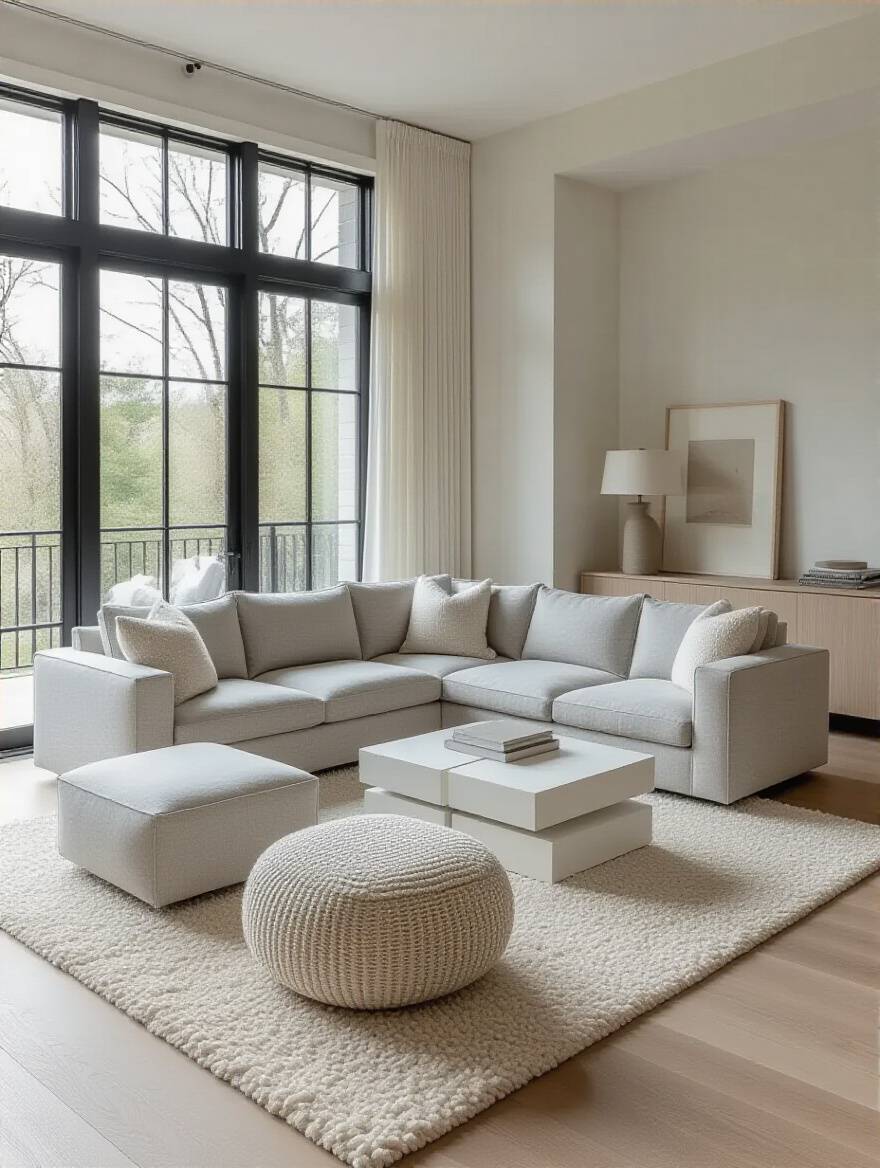
A modular sectional that can be reconfigured from a classic sofa into a U-shape with a chaise is a brilliant investment. Nesting tables can be spread out for guests or tucked away for daily life. A lightweight armchair is much easier to reposition than a heavy, stationary one. By choosing adaptable pieces, you give yourself the power to easily transform your space to meet new demands without having to buy all new furniture. This is the ultimate design superpower: creating a room that serves you perfectly today, and will continue to serve you for years to come.
So, that’s the real story. Your living room furniture isn’t just stuff; it’s the equipment you use to build a more energized, rested, and connected life. By being intentional about your layout, choosing pieces that support your physical and mental well-being, and creating a style that brings you calm, you’re not just decorating. You are actively designing a support system for your health.
Forget the sterile, untouchable showrooms. Your living room should be a functional, comfortable, and beautiful space that you actually love to live in. It should be your personal sanctuary, your favorite spot to recharge. Now you have the game plan. Start with one thing—measure your room, define its purpose, or just add a plant. Each small step you take is a step toward creating a home that actively works to make you happier and healthier. Go build your recovery zone.